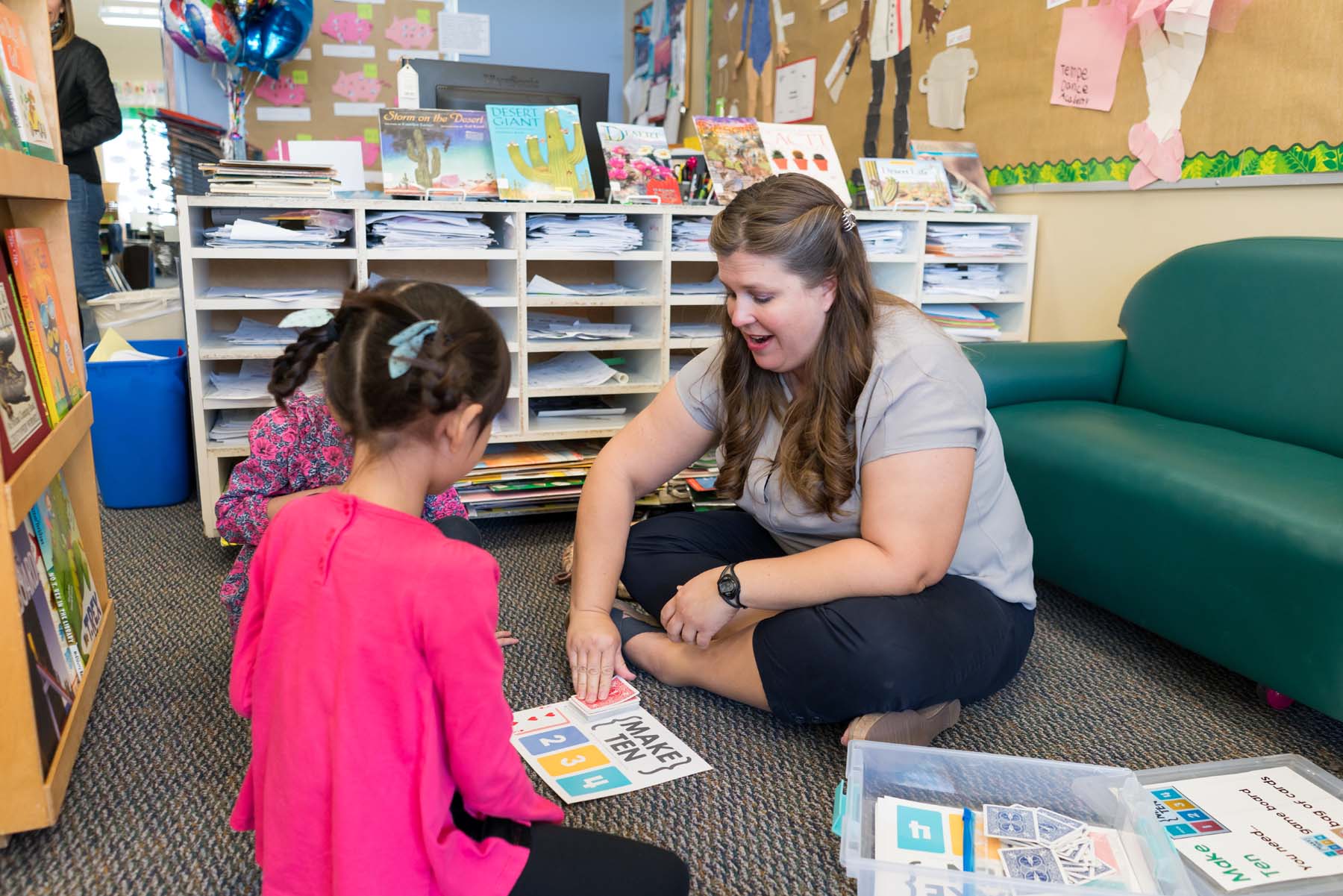The “greater” the visual the “less” kids struggle: Teaching greater and less then to your kindergartner. Ideas from an Expert
Author: Erin Vosseller, Kindergarten teacher, Summit School
Published in the Ahwatukee Foothills News, October 2016
Picture by Summit staff, Micki McIntyre
Most of us grew up memorizing math facts and definitions of terms. This short term memory trick may work for test success, but does little for understanding and applying math to solve real problems.
Can you recall trying to remember which way the greater than/less than symbol should be placed? Would it have helped if you first designed your own large alligator mouth to place between real objects?
Children excel when math is taught through concrete, sensory experiences. The younger the child, the more important it is to provide hands-on, visual tools to create a deep understanding of concepts. This especially true when it comes to numbers and math symbols. Children may be able to count very high, but does the number 58 really mean anything to them?
When introducing greater than and less than symbols, kindergartners need to have already built a strong understanding of more and less. My kindergartners do a lot of work with manipulatives when learning this and other math concepts. This helps them build a visual memory of numbers so that they can find patterns and see the relationships that numbers have to each other.
There are many things we do at Summit School to help children understand symbols and other abstract ideas. A fan favorite in my class is turning greater than and less than into a very hungry alligator, which would rather eat more, something that children can relate to. Our alligators always open their mouth towards the larger group of objects or larger numbers.
Children who are still working on building a visual understanding of numeric values can use objects or drawings to represent numbers. To create a visual, put items on two sides of a table, or in two boxes, or create spaces with tape for your objects. Many stores have inexpensive buckets of cubes or animals, or you can use Lego bricks, pennies, or other favorite things you have at home.
Ask your child to look at the items and ask which they think has more, from a visual perspective. Next have them count by touching each piece to confirm their prediction. Now place the alligator mouth so he can happily eat the most! Don’t forget to have your child make an equal sign on a card to use as well.
Use sticky notes, cards, or dry erase boards for your child to write the number next to each group. This helps create a mental picture of the number and what it represents. Another idea is to use balance scales. Students can weigh groups of objects to help them see more, less and equal while putting the correct symbol in the middle.
Making an alligators is fun, and kids can use it to model and talk about numbers in different ways. The alligator is a visual reminder to them about what the symbol means and they soon move on to using the symbol itself.
As children are ready to progress, use larger numbers or even expressions, such as 3 +2 on one side with 5 – 1 on the other.
It is also very important for children to talk through their thinking, explaining the strategies they use. Take turns with your child reading the expression he or she made, and ask them to teach you how to determine which is greater or less and why. Explaining their thought process takes understanding to a deeper level.
In our kindergarten classroom, we ask students look at each other’s work, listen to each other describe the strategies they used, and begin to analyze someone else’s approach to see if they make sense. Learning is enhanced when math is a team sport! It should be a noisy process as children think out loud, ask questions, and listen to and talk with each other.
They should read the expressions they write, testing them to see if they make sense. With the alligator project, one child might say, “10 is less than 12” while showing classmates the visual he or she created. We teach children to listen C.A.R.E.fully and either agree or disagree respectfully and explain why, combining a successful social skill with mathematical reasoning.
Seeing + touching + listening + explaining = visualizing and understanding! Why is this important? Think about your job. How often does your boss ask you what 28 + 52 equals? Isn’t it more likely that you are asked to analyze a problem, and find a solution that can be communicated and implemented? Let’s prepare our children for more than test grades. Let’s help them prepare to be successful in life.
Erin Vosseller enjoys using her 18 years of experience to teach kindergarten at Summit School. She holds a bachelors of arts in Elementary Education from the University of Arizona, an Early Childhood Endorsement, a full SEI endorsement, and is CLIP (Collaborative Literacy Intervention Project) certified. She also volunteers as an Assistant Director of Arizona Camp Sunrise and Sidekicks, a camp for children with cancer and their siblings, sponsored by the Southwest Kids’ Cancer Foundation.

